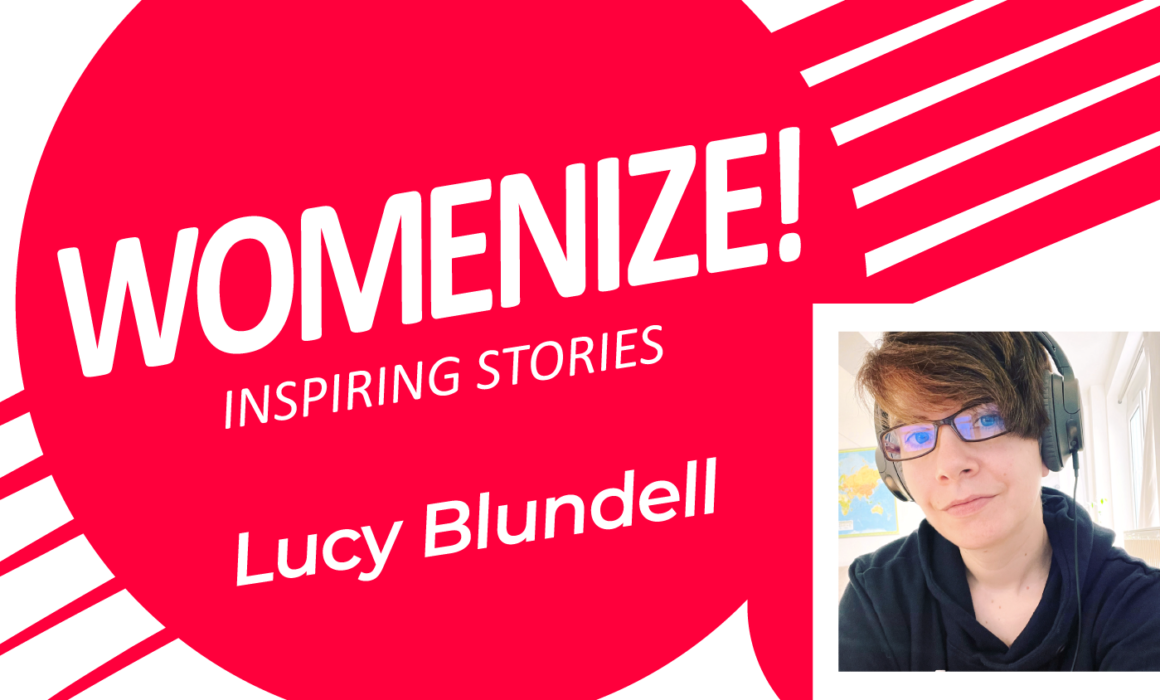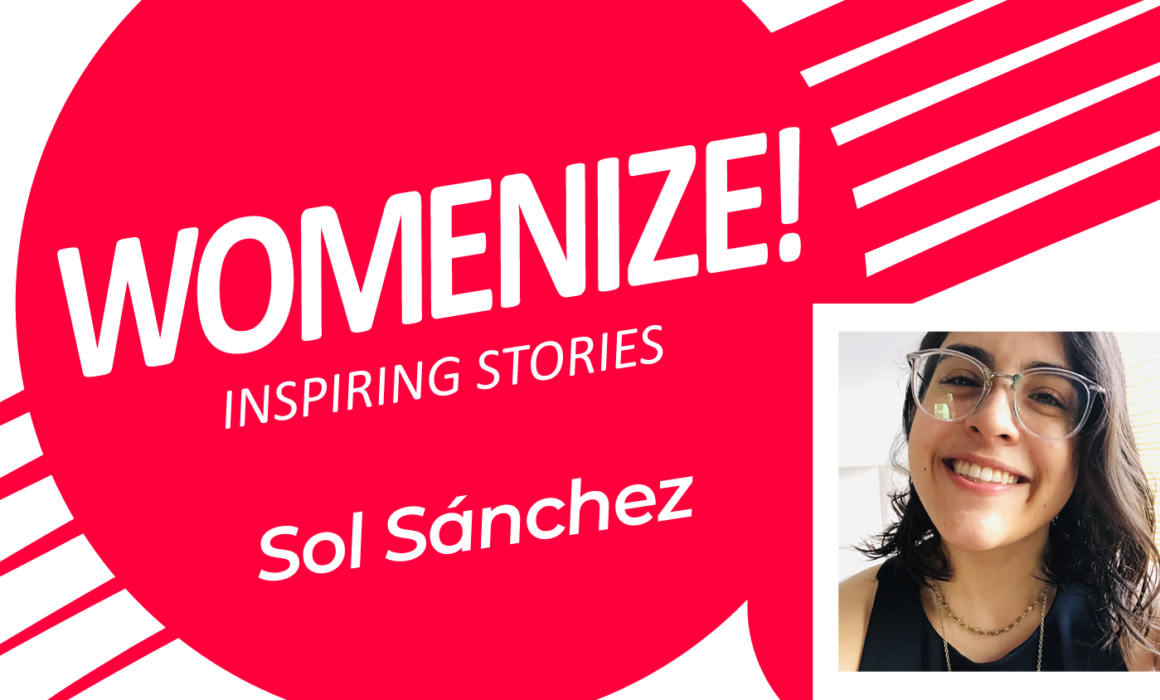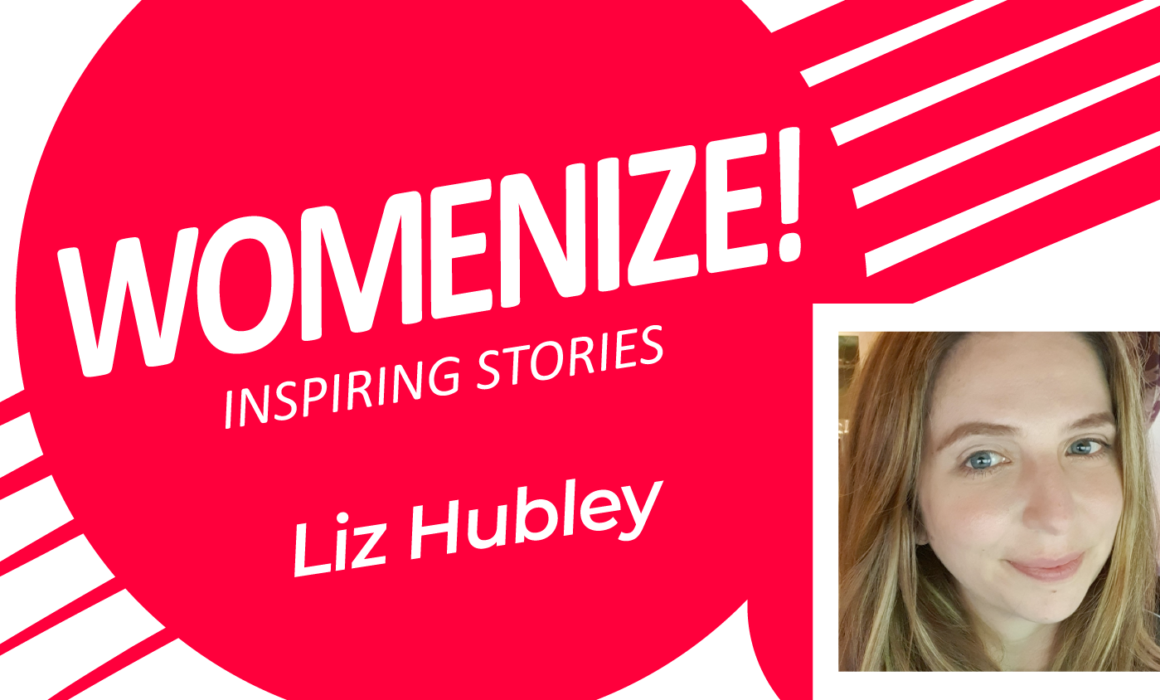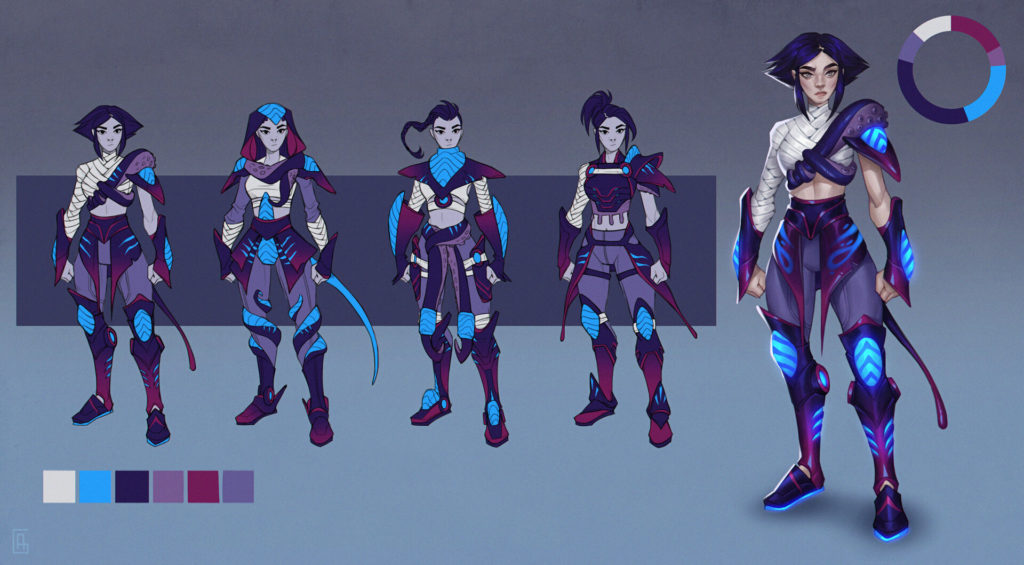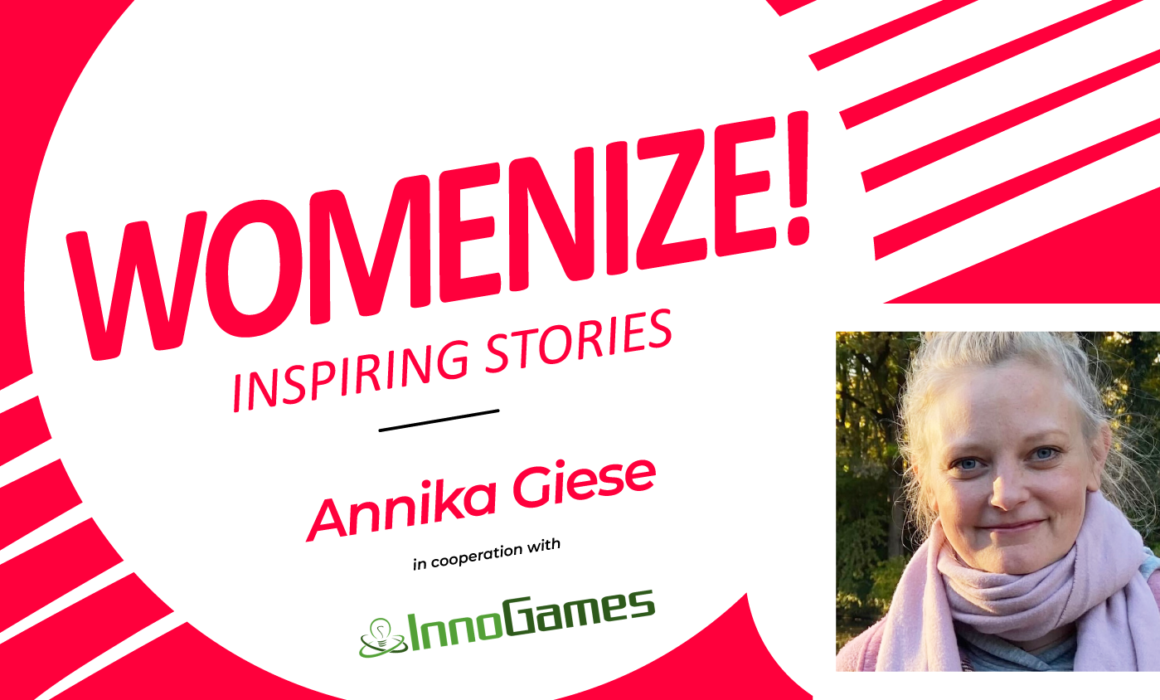Sol Sanchez – Womenize! – Inspiring Stories
Womenize! – Inspiring Stories is our weekly series featuring inspirational women from games and tech. For this edition we talked to Sol Sánchez, CCO at Somber Pixel & Co-Founder of FemDevs Perú. She shares the value of emotionally immersive games and provides insights into the Peruvian indie dev communities. Read more about Sol in this interview:
Hi Sol! How would you describe the indie dev scene in Peru?
Peru’s indie dev community is overall very kind and friendly. Since we are still a small industry, many of us know each other from university, work, or local events. This gives us the chance to stay in touch with each other quite often, which makes me feel like I’m not alone in the journey and that any doubt I might have, I can always ask a local friend around.
However, being a small industry comes with some disadvantages, too. There aren’t many big studios in the country and most of the smaller ones make games only in their free time. On top of that, indie studios tend to have fewer than six employees and the biggest one does not exceed 60. This makes it hard to find a job in the industry and since video games are quite a new concept in Peru, there aren’t many local funding opportunities (especially if you want to make your own game). Not everything is negative of course! Some of our games have not only been shown at events outside the country but have also been recognized with international awards. In addition, government entities are already beginning to see the value of this industry and are looking for new and better ways to continue promoting it.
On my part, I co-founded FemDevs Peru, a non-lucrative association, with the purpose to promote women’s participation and visibility in the industry. We organize talks, game jams, workshops and so much more to inspire more women to join the industry. And like FemDevs Peru, many other initiatives are working to help grow this industry.
The video game industry in Peru has great potential, but still has a long way to go. We’re always looking for more people and companies to collaborate with us, so if you are interested in FemDevs Peru or the Peruvian industry, please don’t hesitate to contact me here.
Do you have any tips and tricks for building emotionally immersive video games?
I think for emotional games, having a clear message for the audience and believing in what you’re doing is key. For “Arrog”, for example, we knew from the start that it was going to be an interactive experience to show how our country feels towards death, how death is just another step in our lives and that we shouldn’t be afraid of it. Many people might find the topic or the game’s design unappealing, but the team and I loved the idea immensely, and after three years of prototyping, re-doing and polishing, we made it come true.
If you don’t truly believe in the game you are making, you probably won’t put your 100% and it’ll show. Videogames are a way of art, and like any artist, we developers put a bit of ourselves into those projects. Even if you don’t agree with every detail of a game, the core message is important and the more passionate you’re about it, the more you’ll do your best for it and the more you’ll enjoy the process of developing it.
What inspired you to create the game “Night Reverie”?
The magical feeling of reliving the innocence of childhood adventures while going through a hard time made me fall in love instantly with “Night Reverie”. I didn’t create the game from scratch, I joined the Somber Pixel team three months after they released the first demo on Steam. Nevertheless, “Night Reverie” was one of the main reasons I chose to join the team and I got to work on the rest of the game with them.
Back then, I was going through a very hard time in my life and the story of “Night Reverie”, even though it wasn’t about the same thing I was going through, resonated with me deeply and made me feel more connected to the characters. That emotional connection and my childhood memories with my sister were the main things that inspired me to work in the game. It’s a very lovely story with really wholesome characters that anyone can enjoy. I hope it gets to resonate with you as much as it did with me.
Thanks for this interview, Sol!
Sol’s links: Contact Page │ Twitter │ LinkedIn │ Somber Pixel
Womenize! – Inspiring Stories Feature by Sophie Brugmann
Carolin Wendt – Womenize! – Inspiring Stories
On the occasion of the International Women’s Day 2022, we present a video special of our interview series “Womenize! – Inspiring Stories”! Our guest is Carolin Wendt, Senior Community Manager at CD Project RED. Read More
Maria Wagner – Womenize! – Inspiring Stories
Womenize! – Inspiring Stories is our weekly series featuring inspirational women from games and tech. For this edition we talked to Maria Wagner, Initiator and General Manager of GamesForest.Club. She highlights the values of building communities and shares challenges of different industries. Read more about Maria in this interview:
Hi Maria! You have managed many different projects across various industries, where did you feel challenged the most?
Each project and work had its challenges, and I loved all of them because those provided me with many opportunities to learn. When I worked within non-governmental or governmental institutions, especially when I led the refugee camp in Berlin, I was challenged by the lack of digital working tools, service-oriented processes, and efficient communication.
Working in target-driven companies, which understand their customers and try to improve their services, inspires me when it comes to number-driven product design, efficiency, and customer-oriented service. Nevertheless, I still did not feel completely satisfied as I always had the personal need to contribute to the bigger picture and do something meaningful. So now being able to marry both worlds and co-create a company, which is number-driven, service-oriented, and supports the games industry to conquer climate change, makes me very happy.
Do you consider the build-up of communities as a vital part of any company’s success?
Yes, definitely. Especially, if we talk about companies within the creative industry. I think it is vital to establish a well-functioning relationship and communication with your customers and fans. Companies, which bring people together and manage to create new lifestyles and cultures, will profit from the feedback and reach their communities provide to them. Nevertheless, an innovative and fun product or service continues to be the key and generally helps to build up communities.
That’s also why GamesForest.Club provides its members and sponsors with tools to engage their communities and customize their digital forests. This and the visual feedback, which GamesForest.Club provides, helps to bring new communities onboard and enhance their contribution to reforestation and conservation.
Could you tell us about the GamesForest.Club initiative?
GamesForest.Club is a non-profit initiative to support the games and creative industries to invest in carbon absorption by planting and protecting forests. We constantly develop innovative tools to enable the games industry to playfully and effectively conquer climate change. It is a club by and for like-minded people, who want to create a global driving force to restore nature.
Using technology, valid data, and fun design, we provide our members and partners with tools that help them and their communities to conquer climate change. I am very thankful for the engagement of over 25 companies, who joined our mission and supported the projects with sponsorships, donations, donation streams, or media coverage already in the first two months. The feedback is amazing and thanks to our members like Miniclip, Goodgame Studios, Matchmade, and many others, GamesForest.Club is growing constantly. Each digital tree within our forest represents a 100€ investment.
Just visit GamesForest.Club and follow the growth.
Thanks for this interview, Maria!
Maria’s links: Maria on LinkedIn │ Maria on Twitter │ GamesForest.Club website │ GamesForest.Club on Instagram
Womenize! – Inspiring Stories Feature by Sophie Brugmann
Tanya X. Short – Womenize! – Inspiring Stories
Womenize! – Inspiring Stories is our weekly series featuring inspirational women from games and tech. For this edition we talked to Tanya X. Short, Creative Director & Co-Founder of Kitfox Games, as well as Co-Director of Pixelles. Read more about Tanya in this interview:
Read More
Liz Hubley – Womenize! – Inspiring Stories
Womenize! – Inspiring Stories is our weekly series featuring inspirational women from games and tech. For this edition we talked to Liz Hubley, Lead Environment Artist at People Can Fly Studio. She shares her approach on managing and growing an art team remotely and how she found her own career path. Read more about Liz in this interview:
Hi Liz! When did you decide to specialize in Environment Art?
I started in university as a character artist and that’s what my first reel was! Though later, when I was finishing my degree, I was part of a group project that made a level in Unreal. It was a Norse temple, very cool. I lost the file years ago, but have always wanted to go back and update it. I got very into the project and switched my focus after that. I haven’t looked back!
The storytelling possibilities in Environment Art are my favorite thing in games. I’ve always loved when you’re playing a game and the artists have added a supporting storyline to the game without any text or VO. It adds a richness that takes a game from just fun to a really memorable experience.
You are leading a team that works from home permanently. How do you manage to provide expert feedback and manage growth digitally?
With 2020, the switch to work from home was a shock to the system for all of us. It took a bit of thought to adjust how I gave feedback from what I would do at the office, which was a daily “roll around” with all my team members, to a digital format. I book an hour of my day and check in with each artist individually and make sure they’re all on track and give feedback. These also serve as mini 1:1, so I end up knowing a lot more about what’s going on with them than if I was in the office!
A bi-weekly meeting with the full art team (not just environment!), including a group feedback session is also very useful. It helps the whole art team really understand the game, its look, and the team’s needs right now. In addition, I do find myself doing a lot more draw overs and reference pulls for them.
Having moved from America to Europe, did you encounter any major differences in game production?
There are definite differences between the US and Europe. Though my experience over here is a bit limited to be sure. I feel that in the US there is a lot more focus on company culture and the individual person’s development. However, in Europe we have a lot of different cultures coming together which leads to some amazing ideas and different ways of working. It’s been a fun challenge learning about different cultures’ working habits and how to guide that into a productive team.
Thanks for this interview, Liz!
Liz’s links: Artstation │ People Can Fly Website
Womenize! – Inspiring Stories Feature by Sophie Brugmann
Aurora Georges – Womenize! – Inspiring Stories
Womenize! – Inspiring Stories is our weekly series featuring inspirational women from games and tech. For this edition we talked to Aurora Georges, Concept Artist at Tap4fun. She speaks about the differences in digital and analogue drawing and where she finds inspiration as an artist. Read more about Aurora in this interview:
Hi Aurora! Could you give us some insights into the day-to-day work in your current role at Tap4fun?
Hey, thanks for having me! Right now I’m still working from home as I haven’t moved to Barcelona yet. The day always starts with a quick stand-up in the morning, via a video call to inform each other what we’re currently working on.
My job is to work on creating characters for a new mobile game we’re making, but since it’s not released yet I can’t go much into detail. However, I can say my job involves drawing a lot of concepts to make sure we find the right direction for each character. There’s a lot of communication between me and the art director, and my daily tasks vary from finding references, creating concepts, making color palette variations, finalizing each character that I work on and making sure the final concept is easily readable for the 3D artists to model afterwards.
Where do you find inspiration for the artworks you design?
I usually find a lot of inspiration browsing Artstation where I follow a lot of amazing artists, and what usually inspires me the most is seeing the way the artists use colors, get down a certain mood or use their brushstrokes in their art piece. I find it incredibly fascinating how some artists work with really unique art styles and just how differently we all seem to perceive things in this line of work.
I mostly look at artwork containing things like characters, portraits, animals, environment and game art. At the same time I also get very inspired by life in general, especially when I go for walks in nature, listen to music, watch movies, play games and also some life situations where I experience certain strong emotions a bit beside the usual.
What advantages and disadvantages do you see when working with pen and paper versus creating digital drawings?
I definitely started out drawing with pen and paper when I was younger, and some advantages were that it feels really liberating to just grab a piece of paper and start drawing freely without thinking too much. I mostly use it when I want to quickly sketch down some ideas that pop up in my head. On the downside, I don’t like how I don’t have a ctrl+z button (undo a pen stroke) in real life and can erase mistakes as easily as when working digitally. Plus accidentally smudging some pencil strokes or erasing too hard on the paper have always been a small pet peeve for me.
I guess it was one of the reasons I got interested in digital drawing during my teenage years where I could really spend hours and hours working on a piece and make all the details I wanted to do. I really like the “painting feeling” when drawing digitally and I definitely have more control when I draw as I can always tweak things, color correct, zoom, flip the canvas to better see my mistakes, plus all the other advantages Photoshop gives you.
On the other hand, you don’t experience corrupt files and lagging when drawing traditionally. I have also noticed that I have been neglecting doing traditional drawing lately which has made it harder for me to come up with interesting ideas for digital pieces. So I definitely feel like I need a fine balance between doing both traditional and digital drawing to feel like I can express myself the way I want with my art pieces.
Thanks for this interview, Aurora!
Aurora’s links: Website & Portfolio │ Artstation │ Instagram │ LinkedIn
Womenize! – Inspiring Stories Feature by Sophie Brugmann
Kiana Mosser – Womenize! – Inspiring Stories
Womenize! – Inspiring Stories is our weekly series featuring inspirational women from games and tech. For this edition we talked to Kiana Mosser, Software Engineer, freelance Animator, Pixel Artist & Game Developer. Read more about Kiana in this interview: Read More
Mariza Dima – Womenize! – Inspiring Stories
Womenize! – Inspiring Stories is our weekly series featuring inspirational women from games and tech. For this edition we talked to Mariza Dima, Senior Lecturer in Games Design at Brunel University London. She speaks about the benefits of having an interdisciplinary skill set while working in the games industry. Read more about Mariza in this interview:
Read More
Recent Posts
Archives
- December 2024
- November 2024
- October 2024
- September 2024
- August 2024
- July 2024
- June 2024
- May 2024
- April 2024
- March 2024
- February 2024
- January 2024
- December 2023
- November 2023
- October 2023
- November 2022
- October 2022
- September 2022
- August 2022
- July 2022
- June 2022
- May 2022
- April 2022
- March 2022
- February 2022
- January 2022
- December 2021
- November 2021
- October 2021
- September 2021
- August 2021
- July 2021
- June 2021
- May 2021
- April 2021
- March 2021
- February 2021
- November 2020
- October 2020
- September 2020
- August 2020
- July 2020
- June 2020
- May 2020
- April 2020
- March 2020
- February 2020
- January 2020
- December 2019
- November 2019
- October 2019
- September 2019
- August 2019
- July 2019
- June 2019
- May 2019
- April 2019
- March 2019
- November 2018
- October 2018
- September 2018
- April 2018
- March 2018
- February 2018

